‘I have a future and purpose’

Love and loss in motherhood




WHEN she lost the baby in her first pregnancy, it was all too overwhelming. Evie
Anne Kanhai- Gurchuran can still remember the anxiety that overtook her; the grief was almost unbearable, and for a long time, she wasn’t sure what direction she wanted to pursue in life or if she’d ever want to be a mom again.

To her, losing her child was the most outstanding challenge she has ever had to deal with as everything changed rapidly; the uncertainty in everything was too much to handle. “Up to five months, everything was going well, and then I would just feel a lot of pain in my pelvis,” Evie shared in an interview with Pepperpot Magazine.
As she started to develop severe complications, things became very scary, in fact, frightening. “We had the funeral and everything. It was something very hard to get over; a very traumatic expe-
rience.”
As depression and other ills stepped in, Evie decided she’d throw herself entirely into work, so she concentrated on building her business.
She’s the Chief Executive Officer of Gurchuran Investments Inc., leading the Java
Coffee Bar Inc. teams, EMTEC, and Site Builders.
She and her husband, Miguel, also started to travel as a coping mechanism. They seemed to have given up on parenting because about five years had passed and Evie had not gotten pregnant again. So
they began talking about adoption, not knowing that they would be having an entirely different conversation one month later.
When Evie found out she was pregnant again, she and her husband checked about five times to make sure it was so. Although very happy and excited about the news, Evie was extremely careful throughout this pregnancy, and today, that baby is almost 10 years old. Evie and Miguel are also parents to three more kids, ages one, three, and seven.
Despite the initial issues that came along with parenting, Evie would have it
no other way. “Motherhood is something that I thought wouldn’t be possible for me. At one point, the doctors were telling me it was unsafe to have a full-term pregnancy, so just knowing that I have been entrusted with four lives makes me feel like I have a future and purpose,” Evie expressed.
Striving to raise her children in a very “intentional” way, Evie says she has in mind becoming a full-time parent within the next few years, which means that she’d have to reduce her responsibilities at work and diversify her portfolio so that she can really get to “dig into motherhood”,

Evie is enjoying motherhood despite the initial challenges
support her kids’ dreams, and help them to realise their fullest potential.
“Parenting four children is all-consuming. No matter what you’re doing, whether it’s working or leisure time, you’re always thinking about them and talking about them is like the highlight of your life,” Evie shared. There are those days that are filled with “imperfection and chaos” but Evie said having a routine helps, along with being consistent in certain things.
“I feel like mothers don’t really have a choice. Some people seem to think that tak-
SEE PAGE XXIII


THERE were a lot of tears as four mothers shared their experiences on what motherhood means to them and the challenges they’ve faced but have never shared. On this Mother’s Day, we celebrate the women who made us who we are.
From moms who work as firefighters and teachers, to stay-at-home mothers, and those who do both, this article will take a look at motherhood from different perspectives and under different situations. The Pepperpot Magazine spoke to mothers with very different stories. But one sentiment remained the same, being a mother isn’t easy, but it is what these women do, and they do it with love.
Today, at first glance Lakshmi Preshad seems to have lived a quiet life -- being a senior teacher at Parafait Harmony Primary School with 25 years of experience and having a husband and a 22-year-old son who is an aspiring agronomist finishing his last year at the University of Guyana. But her story of motherhood, sacrifice and being a mother figure to many children over the years, is remarkable.

During the early 2000s, Lakshmi was teaching during the day, going to the Teacher’s College in the afternoon and caring for her son while

his father wasn’t there. She described this as the most challenging period of her life and one of the most memorable times she had with her son. These memories, however, are not all the hap-

piest ones. “It was just me and him balancing everything,” she explained. For Lakshmi, leaving her son was a hard sacrifice, but it was a necessary one. “I would leave him at home alone to go to college. But I had to say to him, “You need a better life, and this is what I have to achieve.” Looking back now, Lakshmi says that these experiences have brought her and her son closer. She explained how even in the hardest of times, she was always open and honest with her son, never shielding him or lying to him about how things were.
The mother and teacher went on to share how motherhood, for her, went far beyond the home. Although never having a biological daughter, she has been a maternal representation for many young girls. “ Being a mother does only mean being a biological mother. Being a mother means having an interest in children, and showing them that interest so they can share their love with you. If you don’t show interest and love to a child, they will never show love and interest in you,” she said. Going on, she reminisces on all the children she’s taught over the years; she has produced construction workers, teachers like herself, writers, and persons who have gone on to be in many other professions, with the love and attention she has shown and the role of mother she played to many who didn’t have one.
The firefighter mom
Taking down fires for more than 10 years and raising a daughter for more than 17, Tiffany Webster is a prime example of the lengths a mother would go
to make herself a role model for her child. Becoming a mother at the age of just 18, she was forced to make difficult choices. And she was now in charge of not only her future but the future of her daughter.

As much as she enjoys her job today, the job of a firefighter was one she began because it was available, Tiffany told The Pepperpot Magazine. The job of being a mother, however, was far from optional. She recalled how she felt when she first became a mother, saying, “I was overwhelmed. Because I wanted to be the best parent that I could for her.” This, she said, led her to the decision to go to university. Today she holds a diploma in social work, a degree in psychology and is on her way to gaining her master’s. All this while her daughter was going to school and is now completing her own diploma in Communications.
And although they’ve both come a long way, she shares how it was no easy task going to university with her daughter.“One of my biggest challenges was that I had to juggle my daughter with me and back. We even got robbed a few times,” she revealed. However, she stated that many happy moments were shared between her and her daughter. “Every moment that my daughter breathes and I look at her is a memorable moment, [including] her first graduation, seeing her crossing her first milestone and accomplishing something bigger and greater.” When asked how she felt today, looking back, she said she felt proud, that her best was enough for her daughter.
Thirteen years have found Somattie Seopersad, also known as Mala, like many other mothers carrying both her sons to and from school. Being a housewife and a mother for over 15 years, the job women like her do is often under-appreciated. She has dedicated her life to her family, leaving behind all other hopes she had for herself with the birth of her children. She describes it as a 24/7 job, with no days off or
vacation period and one that will never end.
Nonetheless, she made a choice that not many would have. She decided to dedicate her life to being a mother. She stated how she gave up many pleasures in life for the sake of her children and, even more so, all the hope she had for herself. “I had to drop and adapt because I was now a mother. And eventually, I got used to it. Because I told myself, this is what I have to do
because I am a mother now,” Somattie said. When asked about how she feels about her decision and her sons today, she said, “Now I love my job. They make me proud from time to time, doing good in school, being good children, being good human beings.”

Schooling, she said, was the hardest task in parenting for her. “ Going and coming every day to and from school. When asked about her keeping on top of the chores and caring for her children, she said, “I have a timetable, a timetable in my brain. I wake up at this time, and I cook at this time.” And although her eldest son is 16, challenges with them continue and as the child changes, so do issues with them. She described how her son as a child was a handful, but today like many teens, he tends to shut her out. She stated, however, “ Most times I get shut out, but I push with him. Because I
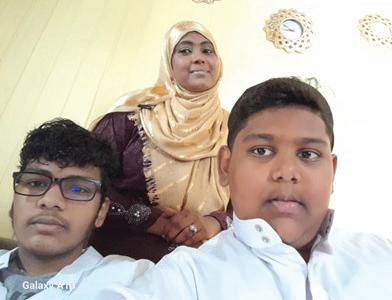
THE world of fashion, runway, and galas is often considered to be mysterious and unknown to most people. The world of designer clothes, lights, and cameras is seemingly an exclusive one. And as interesting as the industry is, the people behind the scenes are what make it happen, and they make it happen with great style.
Pekahiah James, Dexter Gordon, Isaiah Luther and Roberto Teekah are just a few of Guyanaese young artists and designers working to make their mark in the local fashion industry and contributing to the magic of Guyanese fashion. With Guyana seeing


development in many areas, the art industry is seeing its own advancement with events like the Moonlight Stories Runway and Gala. Moonlight Stories, conceptualised and fiorst hosted by Keisha Edwards in 2022, is the first of its
kind in Guyana. This year’s theme, “The Lost City”, aims to portray what El Dorado would have looked like and to unveil the talent of people like Pekahiah, Dexter, Isaiah and Roberto to grow and develop art and fashion in Guyana.

Sculptures among Garments.
As an art history teacher and sculptor, Pekahiah James has been a part of the arts for more than 10 years and she is showcasing her creations at this year’s Moonlight Stories. After meeting Keisha Edwards last year, she was invited to participate in Moonlight Stories and she accepted. With a background in history, it allows Pekahiah the ability to look at art from a historical point of view, and this is expressed in her art.
She has a total of four pieces in this year’s Moonlight Stories and considers the event the upliftment of art in Guyana. Pekahiah said, “There are not a lot of creative events in Guyana. So for artists and members of our community, getting to participate in events like this is amazing,” she explained. Moving forward,Pekahiah describes how art in Guyana will see new levels with events like Moonlight Stories. She also emphasised the importance of taking art seriously, not only to the public but also to the artists themselves. “Artists should see themselves as artists, and as professionals. And they should have the same level of pride as any other professional and the same level of professional approach,” she explained.
On the topic of what she thought Keisha Edwards and Moonlight Stories is doing for artists, Pekahiah said, “What Keisha is doing is an inspiration and is quite honestly beautiful.What we need is a community of artists to say,‘I see your vision, I see your goal, and I want to go there with you.” And Pekahiah ’s advice to young artists is to “Be prepared.”
Dexter Gardener is a costume designer and has been designing and creating for more than nine years. His artistic journey got a boost after he competed for the Mr. Guyana International. Where his piece came out on top. Since then, Dexter has been a regular in Guyana’s art scene. When asked why he chose fashion, he said, “I feel free when I’m creating.”


Dexter’s participation in Moonlight Stories began when he met Keisha Edwards at an event hosted at Castellani House. Previous to becoming a part of Moonlight Stories, he was a fan of Keisha and was surprised to find that she was a fan of his as well. So it was no surprise that he accepted when he was invited to be a part of the highly anticipated event.
As a young designer himself, he emphasises the importance of the art industry in Guyana to be more than an industry; it needs to be a community. “This isn’t just about me. It’s about other artists and us coming together,” he explained. Dexter describes Moonlight Stories as a step in that direction. Dexter believes that for art to move forward, dedication is needed among artists and designers alike. He said, “You have to have consistency in anything you are passionate about,” he said.
Isaiah Luther, designer and founder of Bucked Bead, knows all about the arts and Moonlight stories. His brand focuses on sustainability by using recycled fabrics wherever necessary. And while he is now doing his part in fashion development, he says there was a time when fashion helped him. Isaiah said, “Growing up, I was bullied a lot in school and fashion has always been an armour for me.”
Like many other designers, Isaiah believes events like Moonlight Stories are the key to growing and gaining support for the arts. He stated that, “Moonlight Stories is a strong platform. As a creative, it gives the opportunity to showcase yourself in an amazing light.” He
MIRIAM Corlette Williams is a single mother of five children who agrees with the adage that says that it takes a community to raise a child.
“Motherhood is a joy, and the joys that I enjoy is when I
teach a boy to become a man, it is the father‘s responsibility to raise his son to became a man.
Society has conveyed the impression that men do not cry or express their emotions in a healthy and practical way, she said. Young men growing up now have been cultured to think that when they are faced with hardships, difficulties and
teach her sons how to deal with their emotions in a healthy way.
Williams said that parents must exemplify models of integrity
from childhood and both parents need to establish boundaries in order to ensure that there is a balance.
When it comes to career paths for the child or children, Williams believes that the child should be allowed to choose his or her own career path, but it is the parents’ responsibility to provide guidance.
She opined that both parents should create a safe haven for their children. While sharing these words of wisdom, Williams herself stated that motherhood is indeed a joy. When asked how it feels, she explained: “There is no accolade in my lifetime that supersedes being a mother.”
get to see my children at every stage of their lives and for me that is the greatest joy, seeing them fulfilling their destiny and purpose,” Williams said. She believes that everyone should be interdependent while noting that a mother is a nurturer. Both parents are needed in a child’s life.



Addressing the issue of a single woman teaching a boy to be a man, Williams is of the view that no single woman can
unforeseen circumstances, that they should stand up and take it like a man, void of emotions and emotional expressions.
It is against this background that Williams responded that it is the mother’s role to

FROM PAGE III
am the mother.”
Keep going Sunita Bessair, a mother of six, wears a contagious happy smile that holds both her family together and the struggles she went through.
With two boys and four girls ranging from 32 to 12, she has spread herself thin, working both at home and at work, over the years. As she narrated how she worked to support her family, she said they are things she would have done differently, and there are challenges she faced and continues to face.

One child is a challenge, as any parent could tell you, but six children over 32 years while working is a superhuman task. And it is one that
this woman has managed to do and is still doing. When her first child, her son, was born, she said that that period of her life was simpler and easier. Now with the birth of an additional five, things have, naturally, become more complex. When asked what was her hardest period of motherhood, she said, “Right through. Since I started having children, up until now, is hard,”
If there is anything Sunita would like people to know about the job of being a mother is that it isn’t easy, and you must always be there for your children. “You have to go through a lot ….” Going on she emphasised how she always continues to be there as a mother even when it seems as though she isn’t needed.
Nevertheless, Sunita says her happiness comes from her children.“When they’re happy, I’m happy.” And if there is any message he would like to leave with mothers, who, like herself, may be struggling, it would be to “keep going”.
Today mothers everywhere look back and marvel at all they experienced and the adults they have moulded to contribute to society. And although Mother’s Day is a day for all mothers, they clearly deserve more. So today, give your mother a break, and allow her to recapture the part of herself that may be lost in dedicating herself. Allow her to do things she has always wanted to, tell her you love her and wish her a Happy Mother’s Day.
LAST week the Pepperpot Magazine visited Free Yard, Port Mourant, Corentyne, Berbice to highlight the
settlements that are within the catchment of Port Mourant and it is the home of the late President, Dr Cheddi
is the Port Mourant Market which operates daily but is even bigger on weekends.

Port Mourant, Corentyne
and The Guysuco Training Centre. In a nutshell, it is a village which fulfills all the educational needs of the
Port Mourant is a very large area and it is nestled between Rose Hall and Bloomfield. It was reported that Free Yard got its name from the indentured labourers who lived there. After they had worked out their contracts, they moved to another location suitably called Free Yard.
It was said that Free Yard was also called Yardie Park, the place where the indentured labourers settled in modest cottages and shingle-style houses and logies.
sists of people of Indo and Afro descent and the way of life of the locals is simple and normal.
Most of the residents are either self-employed or hold jobs at Albion Sugar Estate and they have a few businesses that provide steady employment for the people.
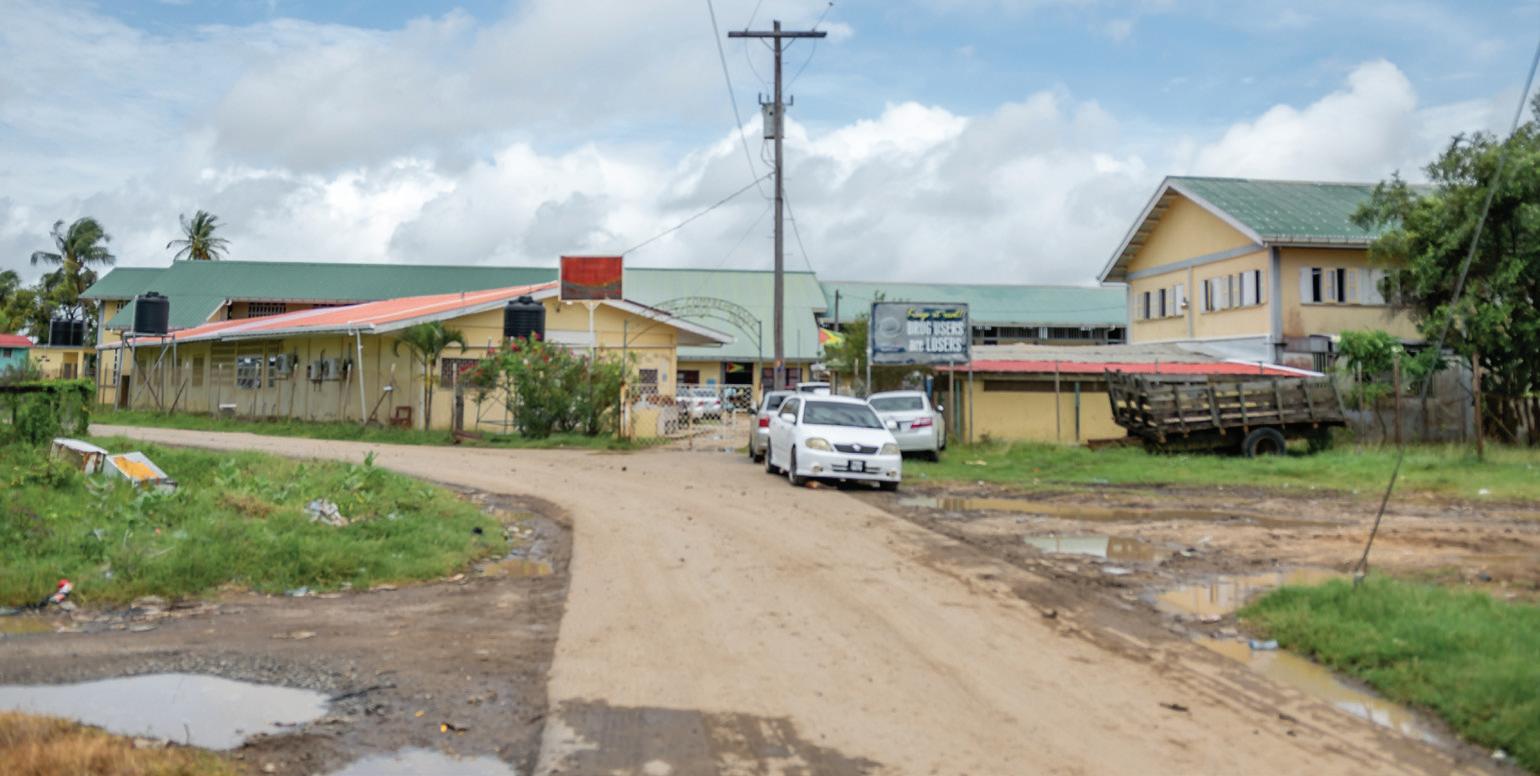
way of life of the locals. This village can be accessed via Spready’s Outlet, located on the main public road through a narrow one-vehicle road. Free Yard is part of the sugar plantation where indentured labourers were housed and worked.
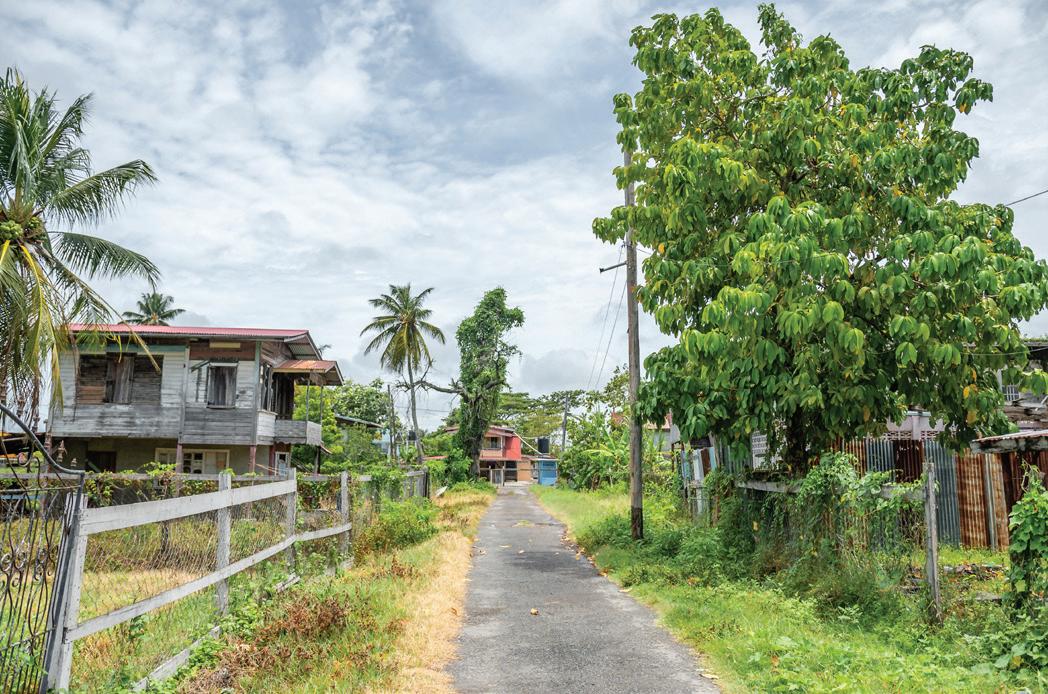

It is part of a series of 15
Jagan and also where Babu John Crematorium is located. These villages are Free Yard, Bound Yard, Portuguese Quarters, Manager’s
is a central hub of businesses and other facilities. It is said to be the home village of some outstanding cricketers as well, and was described
locals.
The Port Mourant Cricket Club is known for having
Free Yard Village has six streets and it has all the basic amenities such as electricity, potable water, internet, landline phone, cell phone service, good roads and infrastructure.
The people of the village
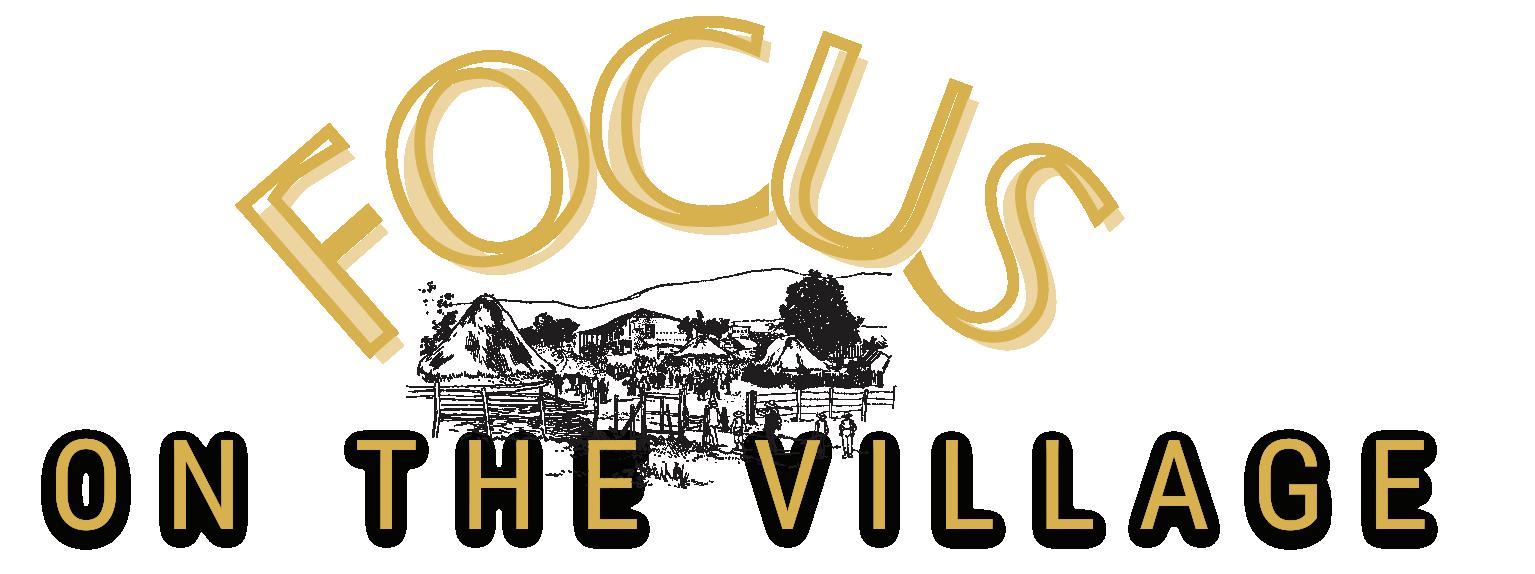
A landmark tamarind tree sits comfortably in Spready’s entrance in Free Yard and is said to be more than 100 years old. It was the old place where the indentured labourers were taken to rest after work.
There is one original cottage house from the days of indentureship that is still there and occupied and also an original shingle-style house that still stands. Repairs are being undertaken to
Compound, Grassfield, Ankerville, Haswell, Miss Phoebe, Bangladesh, Tain, Clifton and John’s.
Just outside this village
as the only village that offers education from “nursery to university”.
It has nursery, primary, secondary, the Tain Campus
produced Guyana and West Indies top players like Rohan Kanhai, Basil Butcher, Joe Solomon, Randolph Ramnarace, Ivan Madray, Alvin Kallicharran, Derek Kallicharran, John Trim and the Etwaru brothers.
It was also home to wellknown attorneys like Sir Lionel Luckhoo and other prominent and well-deserving people.
have access to fresh fruits, vegetables and other food items daily from the nearby Port Mourant Market which is convenient.

Even though the Port Mourant Sugar Estate closed its door, many people in Corentyne depend heavily on the other existing sugar estates, including Albion.

The population of Free Yard is about 300 and con-
the house but one section is still as it was built.
There are also remnants of old tombs and other things in Free Yard village that remind the people of that time.
Free Yard is a place that produced a lot of talented over-achievers and other well-known personalities who have made a name for themselves both locally and internationally.
RAMPATTIE Lutch has a lovely home in Free Yard, Port Mourant Village, Corentyne, Berbice and her nephew lives with her. They have seven cats and a puppy for company.


thritis in the feet. As such, Nandram, 67, who is also suffering from various sicknesses would try to do the most.
The elderly woman is living in her parents’ place, which she inherited following their death and her father
Free Yard as peaceful and just quiet since the neighbours are normal people who are kind and respectful.
Joel Sukanand
Joel Sukanand is 62 years old and he is a stay-athome elder who takes care of his ill brother-in-law, who was once bed-ridden. They live in a lovely big house in Pay Office Street, Free Yard Village, Port Mourant, Corentyne, Berbice.

He related that the house sits on land bought by his late father and the design is quite unique and very different from any other dwelling house be-
to graze daily. She told the Pepperpot Magazine that she doesn’t mind taking out the goats every day, a task she enjoys,
walking through the village, taking in nature and what it has to offer.

Ramanah is one of the few elders who are still
living in the community since most people her age have since passed on while some migrated many years ago.
The 73-year-old is a simple person who goes about her daily activities quietly and, that day, when the team visited, she was preparing a meal of fried fish, dhal, carilla and rice.
She reported that fried fish was the favourite meal for the cats and she would try to do some fried fish as often as possible for them.
While she does the cooking, her nephew, Nandram (only name) would assist with the shopping via his bicycle and do the household chores.
Lutch related that it
was a well-known rice farmer back in the day.
The duo seemed contented about their simple way of life and it showed.
Shivanie Cecil, the housewife
Meanwhile, in the same street is the home of Shivanie Cecil, 28, a mother of five small children whose husband is the sole breadwinner.
Cecil reported that she has lived in that street for the past six years after marriage and she was from a street away, having been born and
cause it is his own creation.
Sukanand worked with the Albion Sugar Estate for 17 years as a labourer/builder until his accident in 2000. He was deemed medically unfit and received a onetime pay-off.

Since he has been unable to find regular work, he is at home doing the cooking, cleaning and taking care of his brother-in-law, who is moving around just a bit due to illness.
His home is a safe place for dogs, stray ones and even though they belong to neighbours, would visit him every day and he entertains them by providing a meal of whatever is in his pots. In return they provide security for his property.
Behind his house remains the only wooden cottage in the original state as it was built and was first occupied by indentured labourers, who worked at the sugar plantations.
was difficult for her to get around due to chronic ar-

raised in Free Yard Village. She described life in
The owners are overseas and caretakers use the cottage.
Asoda Ramanah, the goat herder
Asoda Ramanah is 65 years old and a resident of Free Yard Village, Port Mourant. She has many goats and she takes them out
 By Michel Outridge
By Michel Outridge
DRUPATTIE Itwar, better known as Anjo, is a resident of Free Yard, Port Mourant, Corentyne, Berbice, a mother of three, a housewife and a friend to all in the neighbourhood.


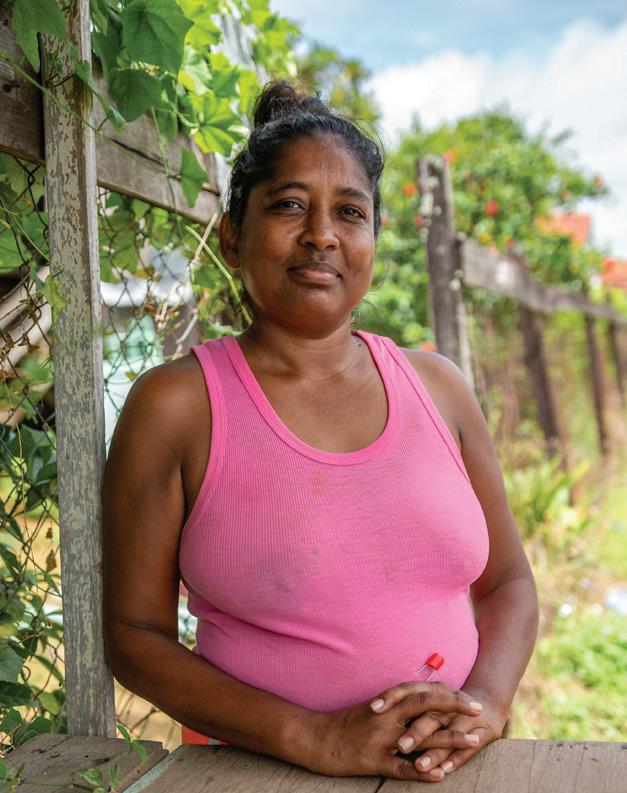
When the team visited,
Itwar was entertaining her neighbours, two women living nearby and picking shrimps after which they had a meal of snapper curry with rice and katahar with shrimp.
The 43-year-old told the Pepperpot Magazine that Free Yard was not a dull place since there was always
something to look forward to and people traversed the street all the time, so she was not bored.
Itwar added that she has lived in the village for the past seven years.
“There is familiarity here and I like it because I am from here. Everybody
like where they are from and it is the same with me,” she said.
Itwar reported that it is a nice place to reside and she would try to live well with everyone because we should support each other regardless of our differences.
“I got married in this village then went to #65 Village to live and my first husband was lost at sea. It happened 12 years ago. He and his crew of five were never heard from or seen again. I had to move on,” she said.
Itwar stated that she remarried and was living at Bushlot Village and then she eventually returned to her home village to settle for good.
perpot Magazine that by the end of this year, she is hoping to open her own small business, a roadside snackette to sell food.
The mother of five pointed out that from home she makes dhal puri to sell based on orders but since she had a baby, much of her time was taken up caring for her child.
She also makes icicles and lemonade to sell and she is expected to restart her small business soon since the
has diffi -
The homemaker told the Pepperpot Magazine that even though they have a few ‘bad apples’ in the community, they do not interference with her and she was pleased about that.
She would take care of the household chores and cooking while her husband is a labourer attached to Albion Sugar Estate and is responsible for clearing the canals that come under the estate.

Bharat Sookdeo has been working at the same estate for the past 30 years and, that day, he was on a day off taking some time to relax in an outdoor hammock in his verandah.
Down the street is the home of Shabanna Lily. The 42-year-old told the Pep -
child is now over a year old.
Lily is a single parent and
culties since she has no one to care for her youngest child whose father migrated and never returned.
She lost her first husband at sea on a fishing expedition when he was burnt to death 10 years ago and she was left to care for four children, some of whom are grown today and leading their own adult lives.
Lily has been residing in Free Yard Village for the past 16 years and is originally from Bloomfield Village.
She has a wooden cottage on Spready’s entrance of the community and she enjoys the quietness of the place.
“I am hoping that things will get better for me because with the establishment of my own small business, it will bring in a steady income to the home and that is enough,” she said.
Two of Lily’s children are still living with her and the elder would often assist with the daily chores.
HAVING come from among the first batch of apprentices at the Guysuco Training Centre, Port
Centre as an Instructor and then he was promoted to manager at the facility which has a world-class machinery workshop.
Being a product of the

else was within reach it was very convenient for him.
Sookpaul told the Pepperpot Magazine that Berbice was on the rise and a site had since been identified for the Oil and Gas School and the Hospitality and Tourism Institute in Port Mourant.
“Directly the Guysuco Training Centre provides 80 percent of skilled employees for ExxonMobil as well as the sugar industry and we are a machine producing skilled workers that are cream of the crop, so to speak,” he said.
The Guysuco Training centre was established in 1957 to train workers in


technical skills for the sugar estates.
Sookpaul added that to participate in the four-year apprenticeship programme
with the Guysuco Training Centre you must be sponsored by a master of an estate and must be within the age of 15 to 17 years old.
He explained that they would campaign at schools across the country and distribute application forms for
Mourant, Jainarine Sookpaul has maintained that pride over the years and worked his way up in the sugar industry to attain the position as manager of the Centre for the past 10 years.
very training centre, Sookpaul is very aware of the acquired skill to control and process instrumentation to replace humans without the possibility of errors and down-time.

The resident of Free
Sookpaul spent two years in the field of Electrical/ Instrumentation after which he worked for five years at Albion Sugar Estate, following his graduation in 1994. He was then seconded to the Guysuco Training
Yard, Port Mourant, Corentyne, Berbice and the father of three reported that the area was a central hub and there was no need for him to relocate since his office was a street away and everything

NARESH Arjune is very comfortable working from home as a mechanic and a self-employed resident of Free Yard, Port Mourant, Corentyne, Berbice.

The 41-year-old reported that he has a natural likeness to fix things that are broken. As such, he developed the habit at a young age to make things operational once again.
He realised he can become a mechanic. Being a lover of vehicles, he was fascinated with that prospect and he qualified himself for the job.
The father of two added that it has been 12 years since he is in that field and he moved to Free Yard after marriage from Ulverston, Corentyne.
“Working from home is quite convenient and I would have it no other way, I would take my time to complete jobs and so far, things have been fair,” he said.
Joshua Wilson, the GWI employee
Meanwhile, Joshua Wilson lives just next door and he is married with two children and moved to Free Yard Village from Rose Hall when he tied the knot two years ago.
Wilson has adjusted to life in Free Yard and seems comfortable, despite challenges of garbage collection
The 55-year-old told the Pepperpot Magazine that he is a labourer at Albion Sugar Estate and things have been difficult for the past two years managing the home, work and the children.

He reported that the children are ages six, 10 and 11, two boys and a girl and he is doing his best to ensure they go to school.
To top it off, Totaram is renting a house since doesn’t own a plot of land yet but has made an application to the Ministry of Housing.

The sugar worker is originally from Betsy Ground, Canje and relocated to Free
in the village.
The 23-year-old advocated for regular garbage collection in the village.
Milton Totaram, the single dad of three
Milton Totaram is also a resident of Free Yard, Port Mourant, Corentyne, Berbice and he is a single dad of three school-age children who cannot hold a steady job since he has to be at home to tend to his children.

Yard, Port Mourant, 13 years ago.
“The front part of this village is very quiet and safe, but the same cannot be said for the rear. I have four dogs for security because the ‘village thieves’ would jump in the yard to take away things that are left unattended,” he said.
Totaram disclosed that the house he is renting be-
FROM PAGE X
longs to his ex-wife’s family and they assist him from time to time, and he is very grateful for that.
Ulamattie Jailall, the home-maker
Ulamattie Jailall is is a stay-at-home mother of four and disclosed that all of her children are grown and moved away except for one son, who still resides with her.
The 61-year-old is attached to Albion Sugar Estate as a fitter machinist, a product of the nearby Guysuco Training Centre.

That day when the team visited, Jailall was at her neighbour’s home. She assisted them in picking
Jailall celebrated her 61st birth anniversary on Sunday and was happy she could and has the blessing of good health.
Her husband passed away years ago and was bedridden before succumbing to a stroke.
To become gainfully employed, Jailall would still do part-time domestic work within the village despite her age and she likes being active, something to do all the time.
Jailall told the Pepperpot Magazine that she has been living in Free Yard Village for the past 25 years and it is a nice place to settle since the neighbours are good.
She used to live in Suriname with her husband and her father-in-law encouraged them to return to Guyana.

It is in relatives of her late

Parts of the house have been rehabilitated but a section is still in its original shape, as it was constructed many decades ago.
The house is in front of the landmark tamarind tree, which is said to be more than 100 years old.
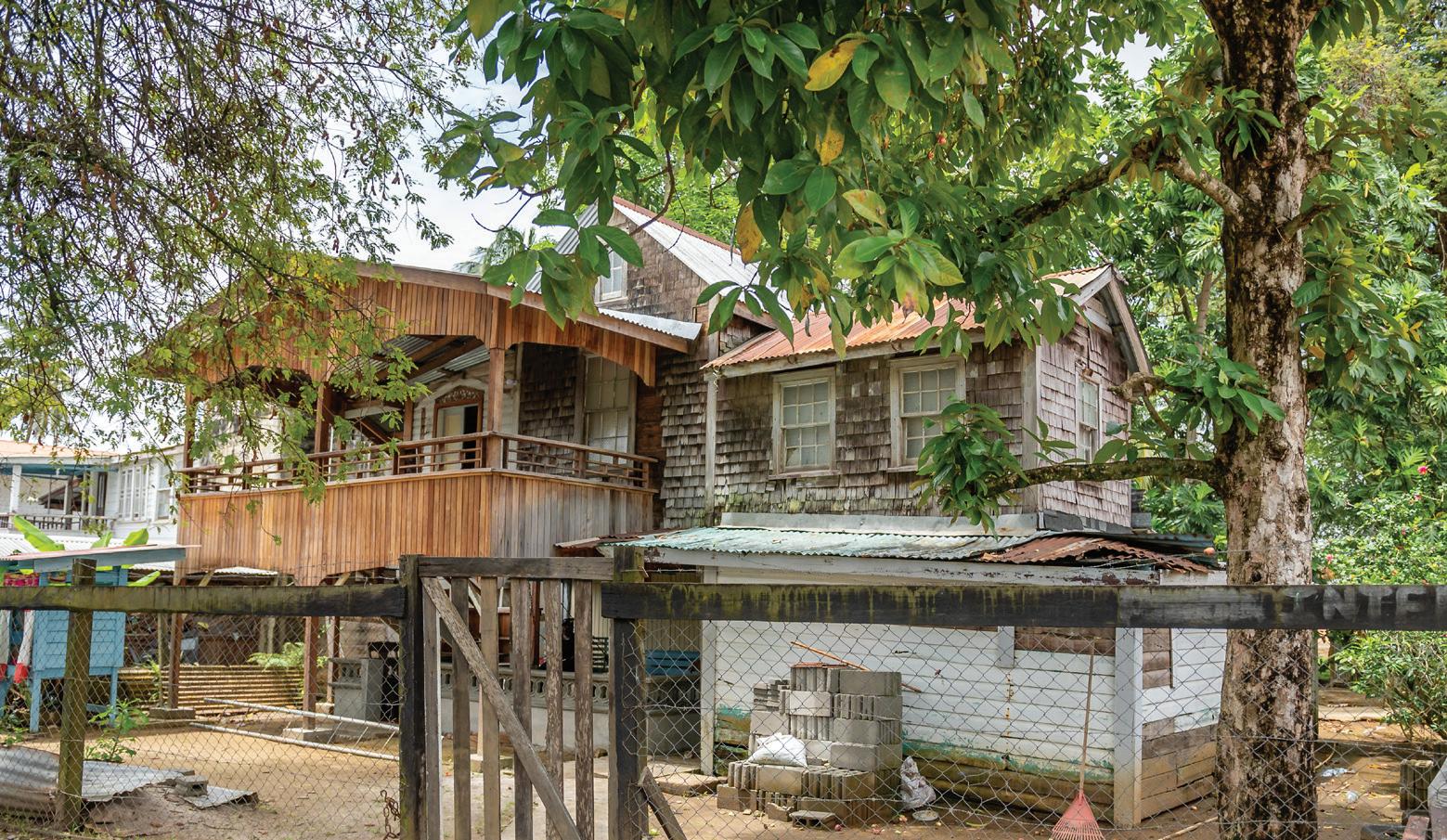
some shrimps, leaving her doors open as usual.
She has a tidy, wellkept home and surroundings and had already cooked and completed chores quite early, a normal task.
husband’s house she occupies and it is the only shingle house in the village that is still standing. It was said to be built in the 1960s.
The house is a landmark and it is part of history, in the days of indentureship.
OVER 85 percent of Guyana’s land is covered in forests; as a result, Guyana is one of the most biologically diverse countries. A biologically diverse ecosystem with plant and animal species indicates that the area can sustain abundant life and continue to support development. In Guyana, biological diversity is a crucial foundation for regulating the climate, reducing poverty, providing fresh water and hydropower, fostering economic growth and development in sectors like agriculture, forestry, and fisheries, and funding community-based economies, especially in the hinterland. Biodiversity research is an essential tool for setting baselines and monitoring changes in biodiversity over time, which is crucial for understanding the impacts of human activities on ecosystems and for developing effective conservation strategies.
Guyana’s National Biodiversity Strategy and Action Plan (NBSAP 2012-2020) identifies research as a priority area as it provides much-needed insight into the intricate relationships between different species and their environment, including the effects of climate change, habitat loss, and other human activities. Biodiversity Research has been utilised to provide baseline data for the monitoring and management of the impacts of logging and mining activities on forest ecosystems here in Guyana. We recognise that continuous research in species populations and habitats aids in the detection of changes in biodiversity and assesses the effectiveness of conservation measures aimed at mitigating deleterious impacts. The Environmental Protection Agency (EPA), as the country’s focal point for the Convention on Biological Diversity, plays a key role in permitting, monitoring, and supporting biodiversity research in the country. Biodiversity research also allows the EPA to fulfill its legal mandate to coordinate biodiversity management programmes and help Guyana meet its reporting obligations for international conventions.
Who is required to apply for a Biodiversity Research Permit?
Under the Environmental Protection Act and its regulations, any person or organisation wishing to research biodiversity in Guyana must apply for a research permit from the EPA. This includes researchers from Guyana and those from other countries that fall into the following categories academic researchers, commercial researchers, and international film crews. Studies involving the following activities require a permit:


The collection of specimens of flora and fauna, including seeds, tissue samples, and living organisms;
The use of non-invasive techniques, such as remote sensing, to survey biodiversity and film the forests, wildlife, natural sites, hinterland communities, and culture;
The manipulation of natural ecosystems, such as the removal or introduction of species;
The use of chemicals or other substances that may have an impact on biodiversity; and
The use of indigenous knowledge or traditional ecological knowledge.
Researchers desirous of conducting biodiversity research are required to submit an application (which can be downloaded from our website) to EPA Guyana and pay a non-refundable processing fee of US $75.00. Applications are to be submitted three months before the start of the research and late application will be subjected to a US $40 late fee. This in no way guarantees that permission and a permit to conduct research will be granted. The EPA may reject an application for biodiversity research if it is deemed non-compliant with the Agency’s governing regulations and guidelines, lacks scientific merit, could hurt biodiversity, or has a conflict of interest or bias.
Once granted permission, upon the completion of the research, it is required that a preliminary report, field notes, photographs, and recordings be
THIS scripture above has more meaning to me now in the last few weeks than before- about how we are “fearfully and wonderfully made”. I experienced one of the best days for this year at Love & Faith Women’s

These two verses are so profound and have helped me with my confidence, knowing I was uniquely created. “I know that full well”. These few words coming from David speak of confidence. I also focused on the word knit for a while. I have
Ministry’s Fearfully and Wonderfully Made Brunch and Chill Day at Tower


seen many people knitting, and the intricate interlocking always fascinates me. Imagine God creating a masterpiece in all of us; none of us has the same fingerprint, even if they are twins.
Fearfully” indicates that creating life is a reverent, holy process.
Suites. Relaxation and spiritual food contribute positively to our mental health.

I must thank pastor Carole Brooks for entrusting me with the task of sharing at the brunch and the topic was “Fearfully and wonderfully made”. Her leadership for the Women’s Ministry has encouraged us to study the Word for ourselves. It was a privilege and allowed me to internalise and dive deeper. Psalm 139:13-14 “For you created my inmost being; you knit me together in my mother’s womb. I praise you because I am fearfully and wonderfully made; your works are wonderful. I know that full well.”
The word in Hebrew is yārē’. It is translated fearfully but isn’t about being scared but rather about being in the presence of what is sacred. This type of “fear” is like the sense of awe or astonishment that overcomes us in a magnificent cathedral, staring out over a great range of mountains at sunrise or when holding a newborn. I recall holding my daughters a few minutes after their grand entrance into this world.
I was truly in awe of how beautiful and precious this little body was — touching the tiny fingers, toes, ears etc. The human body is not just a human body. It is an extraor-
HER name is Sajani. An East Indian woman from a third-world country. She had migrated to America a few decades ago. Life had taken her through many paths, rough and smooth, but she managed
to hold her own as a wife and mother. Her inherited strength, resilience, and determination keep strong the pillars of home and family. Her husband had died fifteen years ago, yet she never faltered nor missed a
step in caring or providing for her children. But as she grew older, her body became worn and tired, losing the vibrancy and enthusiasm of her younger years. She had slowed down and worked fewer hours, close
to retirement, not worrying about anything. She knew that as she held her children’s hands when they needed her, they would hold hers when she needed them. But life dealt her a painful blow.
Today she sits in the garden of a nursing home in a wheelchair.
“This must be a nightmare,” she kept telling herself, “I will soon awaken from it.”
But days went by slowly, seasons changed and

life, it seemed, was moving ahead, leaving her behind. Her sons came on her birthday to celebrate with her. Such a joyous feeling she had felt that day, her
SEE PAGE XX


dinary work of art by God.
FROM PAGE XIII
“Fearfully made” means there is mysterious awesomeness about calling an individual into being. We aren’t cranked out on a human being conveyor belt in God’s great soul factory. Each of us is “crafted” by God in His image but also specially designed to be who we are, to fulfill the purpose God has planned for us.
“Wonderfully made,” translated from the Hebrew word pālâ reinforces the notion of our individual craftsmanship and purpose. This phrase means we are created “distinct,” “set apart,” or “distinguished” from other creations. The first thing to understand about this is our distinction from all other created beings. Humans are the climax of God’s creation, set apart from all elements, vegetation, animal life, and even from the angels. We were all created to fulfil a particular purpose, and none one was an accident. I believe the discussion gives us a lot of food for thought after our physical food.
From all the feedback, the variety of items on the brunch menu was delicious and of high standard. “This pepper pot is the best’’, the roti and pumpkin was delicious, this bake and salted fish was just right,” “I can’t decide which dish I like best because all is sooooooo good.” “I couldn’t believe the variety to choose from and everything I had was off the chain.” These were some of the comments from the ladies.
The atmosphere allowed people to interact more than when they met at church and people had the opportunity to chat on another level. The energy in the room was contagious and the instrumental jazz background music added to the ambience. Many expressed how much they needed this day of relaxation and self-care. Some ladies opted to swim or lay in the pool and soaked their bodies.
We can get up with everyone and everything around us and neglect ourselves. I was pleasantly surprised that my mom decided to join us because she does not enjoy socialising as much as I do. She was thrilled in the end because she relaxed and even made a couple of acquaintances. Some of the ladies returned to Tower the next day for the regular Sunday brunch because the food was impressive.
I invite you to Sunday brunch to experience the brunch in town at the most reasonable prices. You have an advantage when you make your reservation. Take some time today to remember that God has created you as a masterpiece and don’t let anyone try to tell you differently as we continue to celebrate this beautiful journey called life BEYOND THE RUNWAY.
FROM PAGE XII
submitted to the EPA before the researchers depart Guyana. Researchers who are desirous of exporting samples must apply for the EPA’s Export Permit. In addition, the EPA requires the submission of the completed final report and any publications based on the research.

The EPA welcomes the opportunity for biodiversity research to be conducted within Guyana as it establishes baselines that aid in our efforts to monitor, manage and preserve Guyana’s biological wealth. We recognise, however, the importance of holding researchers to the highest scientific and ethical standards to ensure that research activities are conducted responsibly and sustainably and that the interests of Guyana and its people are always protected.
We invite you to view The Environment Matters episode, which focuses on our biodiversity research process, using this link https://youtu.be/o5eOYhne3FA
You can share your ideas and questions by sending letters to: “Our Earth, Our Environment”, C/O Communications, Environmental Protection Agency, Ganges Street, Sophia, GEORGETOWN, or email us at: eit.epaguyana@gmail.com. Follow us on Facebook and Instagram and subscribe to our YouTube channel.
FOR the first time, on Arrival Day recently, I visited Plantation Highbury in Region Six (East BerbiceCorentyne). At this place, the first batch of East Indian indentured labourers
was brought to Guyana onboard a ship called the Whitby. Hours later, the second batch of Indian labourers was brought to Guyana’s shores onboard the Hesperus. As an In -
do-Guyanese, being at Highbury made me think about my ancestors.
My reflection on my ancestors started several weeks ago during a visit to India. Growing up, I heard stories
of India being the ‘motherland’ and there was always a cultural connection to that South-Asian nation, be it through movies or prayers. But while there, I didn’t feel the overwhelming sense
of connection that I thought I would. Instead, I wondered more and more about why my fore-parents would leave India to come to Guyana. My feelings, I believe, were also influenced by Gaiutra Bahadur’s book ‘Coolie Woman’ which offered me some things to think about. She wrote about the life of many women in India, their exposure to seemingly rigid cultural norms, and the allure of migrating. That book explored the many reasons people used to leave, reasons I can’t yet determine for my family.
For me, Highbury, India and ‘Coolie Woman’ serve as a stark reminder of how much I do not know and, perhaps, how much of my heritage is slowly slipping away from me. And I hope I can change that.
At the very least, I know that my paternal great-great-grandparents came from India. I may never know why they came to Guyana, but I wish I knew whether they were fleeing hardship or being swindled. I wonder, were my greatgreat grandmothers widows in India? Or did they simply believe that a better world existed in the new world they were coming to?
The answers to these questions are difficult to find, but I know, at least, that there are records available at the Walter Rodney archives that may allow me to identify who my ancestors are and where they came from. So I will try to find my connection.

While embarking on this newfound quest, however, I think more about other ancestral connections here in Guyana. And I reflect upon the attention directed towards the British monarchy now given the coronation of King Charles III on May 6, the day after Guyanese celebrated Arrival Day.
There is something very unsettling- to me, at leastabout such an event in 2023. The British are among those responsible for the genocide of our Indigenous People, the enslavement of Africans and the mistreatment of the indentured labourers. These were all actions undertaken to enrich those societies at the expense of
underdevelopment for our countries and people. We still have not received a full and formal apology, instead of statements of regret or reparations, more broadly, but an institution that has profited from exploited labour continues to be upheld and revered by many.
I acknowledge that I am more fortunate than some because there is some possibility, no matter how slim, that I can find my ancestors based on records of the East Indian indentured labourers brought here. That is not the case for Afro-Guyanese, for example, since their ancestors were brought as property and barely recognised (if at all) as humans.
Understandably, my quest to piece together my Indian ancestry makes me think more about the reparations that are being demanded for people of African descent and our Indigenous people.
As I mentioned in previous columns, there has been the argument that enslavement happened centuries ago and that people should simply move on. Only recently, the current British Prime Minister, Rishi Sunak, echoed similar sentiments. I don’t believe that is a fair or honest position; instead, I believe ignoring our history detracts from the lasting impact of enslavement experienced today- be it entrenched health issues or systemic underdevelopment from centuries of exploitation. It does not cater to the psychological trauma of people of African descent, nor does it assess how enslavement contributed to the debt-ridden feature of Caribbean societies. There are nuances to reparations, but at the core, these are needed to correct (or at least help mitigate) the historical wrongs of enslavement.
Searching for my ancestral connection may be a futile pursuit but at least it helps me to reflect upon and appreciate the people who were brought to Guyana and the people who lived here before a bit more.
If you would like to connect with me to discuss this column or any of my previous works, feel free to email me at vish -


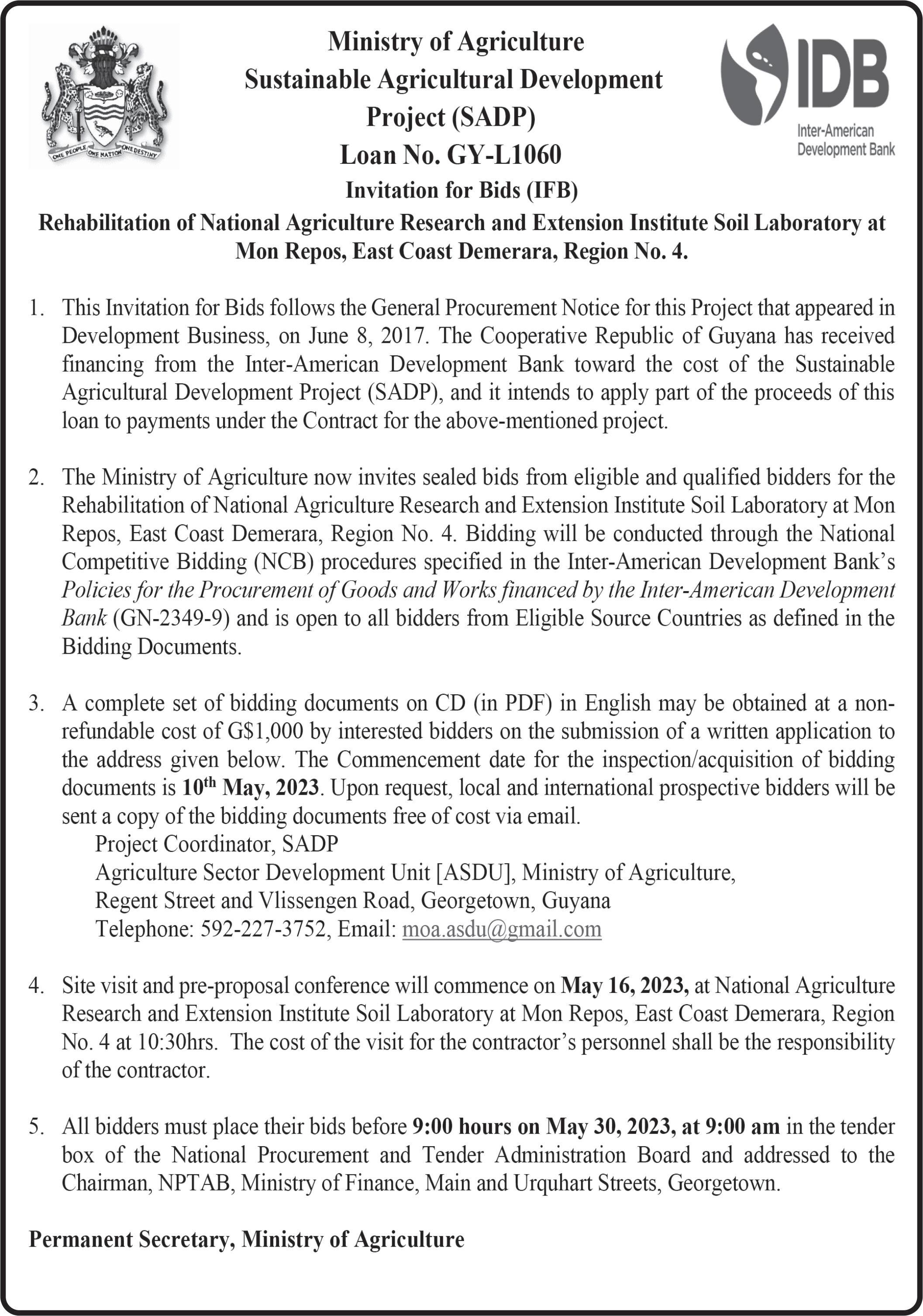
IT all began with Mankind looking back, in an urge to understand where species came from, especially from what or where our own primate ‘family-kind’ originated.

All this is new; less than 300 years ago, though the older first steps towards that knowledge of origins began with the mind’s quest for clarity before recorded history, thus the timeless cultivation or inspiration that led to religion and the Gods, their divine priests, and prophets.
That didn’t go too well, because our specie always had a diversity of temperaments, and possibly the same amount of mental-illness disorders that we have today, hence the efforts to explain the natural mysteries that enveloped their world of storms, floods, and earthquakes needed a definition; an understanding to simplify phenomenal challenges and interpretations for their dreams; dreams and visions that always had diverse origins and interpretations.
What was certain was that the world our distant forefathers lived in imposed a conscious awareness; a need to construct a rational sense of order, discipline, and control to organise the haunting curiosity to explore. The first two faculties that were enabled to provide inner strength, mental and spiritual, and a reprieve from fear, this group consolation came with ‘Art and Song’ thus Imagery and Iconography enabled the symbolic language to come alive, and songs preserved the experiences of the group, sacred singing would follow. The order of ritual was awakened to explore and observe the language of the stars and nature. The confidence of dogma provided interpretations, wrong or right, through the ages and here we are today, with the realization that we are enveloped in the symbolic sacred garden, this earth, and are expected to manage this garden. But the greed of progress has gone too far, the aged ordinances are cast aside, with the obvious survival of self, the compulsion of greed that lingers with the more militarily advanced nations, can happen here, very much to our detriment. If we take into consideration

IN the Western and even in the Islamic World, in the 19th and 20th centuries, society became increasingly conscious of women’s oppression and discrimination. Women were kept out of the power structure: they could not vote, could not serve in parliaments or in government service; they were paid less for doing the same jobs as men; they were denied Education; the professions were accordingly closed to them; and they were often subjected to violence and could have no protection or redress from anyone.
As life became more civilised, it was realised that the ill-treatment of and discrimination against women retarded society and ultimately negatively affected everyone. It was also realised that if women were engaged in the world of work, society became more prosperous and women were efficient and often outperformed men.
By the beginning of the 20th century, in almost all countries, women were freed of all their disabilities and given full legal protection. And though there were still a few areas of discrimination against women, women were now found in every field of activity, outperforming and sometimes outnumbering men in academic performance and other spheres. All welcomed this freedom of women but then it took a sudden and unexpected turn.
It was discovered that men, especially in the developed countries, were becoming demoralised to a greater or lesser degree; they began to opt out of society, becoming drug addicts, leaving the workforce or having low productivity, becoming less ambitious than formerly to qualify themselves in the various trades and professions, In the schools, boys were doing less well than girls; many males did not attend school or dropped out, even at University levels.
Men began to care less for their families, often abdicating the role of breadwinner and engaging in domestic violence against wives and children, sometimes even murdering them.
In the developed countries, as mentioned above, there is far more awareness of the malady and there is a growing corpus of research and efforts are being made to address it. In Guyana, President Dr Irfaan Ali is one of the very few who is thoroughly seized of the problem and despite an extraordinarily busy schedule, he was able, last October, to establish a kind of guild known as Men on Mission (MoM) to begin to address the issue. His pioneering initiative is timely.

In establishing MoM, President Ali remarked that it was done “to tackle toxic masculinity and create a positive environment and safe space for men, promoting integrity, productivity and accountability and character building.” He then went on: “We men are now the root cause of many problems in society. It is now our time to be the root or solution; to be the root of positivity, to be the root that makes a difference, to be our root that builds a support system.” The core membership of MoM were personnel of the Guyana Defence Force (GDF) and it is expected that this core will be extended to include men of every background with chapters in other parts of the country. MoM has been involved in a number of activities: They have rebuilt the houses of poor persons which had been destroyed by fire and constructed new houses to replace the shacks many of the very aged were inhabiting. They have been beautifying the environment by rebuilding broken-down fences, painting modest homes and planting flowers.
MoM has begun to work with boys and also girls to get them back to school and the
the simple examples of ‘The New Georgetown Buildings’ makes one wonder, if new laws have been written to allow a four/five-story concrete building to be erected in front of two small wooden cottages at the back, impeding on the very exit from those cottages in case of emergency. But the task is bigger than that, the view must be extended to the complete living environment of man, creatures, and the civilizations within the soil, that will determine whether we eat or not. About the poisoning and abuse of soil organisms and particles, we have got to rearrange our priorities with nature, because nature is not a pimp’s toy, she will react.
I can recall at the funeral of a friend at Saint Phillips Church, Werk-en-Rust, some years ago, with horror we noticed that all the silk cotton trees there were
cut down. How could this have happened! Who could have allowed something like this to occur, we questioned among ourselves. Are we still the ‘Garden City of the Caribbean’ with no one to answer. I can recall the 2005 flood incident, when there were questions about why Albouystown’s flood was not moving, only to discover, after we followed the obvious trail, that a businessman had incorporated the Sussex Street Canal exit in his adjacent property. When or where did this businessman get the authority to do something like this? Citizens, however, didn’t wait. They started to dismantle the structure that was imposed on the Sussex Street exit. It’s not what the businessman was allowed to do? It’s the mindset that made him/her think that it was right, and the authority that like-

wise sacrificed that obvious initiative, and at what price? This is a micro-example of the danger our organic world is facing, through the effects of manmade global warming and Frankenstein Agriculture. I lived overseas for periods, and I can remember a discussion about having a special meter that can indicate the level of pollution, the problem was, did it matter, what option did I have, but to exit the door and get what I had to get done? It did haunt me however, that progress came at a terrible price, but then, it was a foreign thing. Until now, here, driven by insatiable greed; some local farmers are spraying fruit and vegetables with ripening toxins. This, however, has spurred others to do the right thing and go organic. Thirty years ago, were I told that this could happen here, I would
FROM PAGE XVII
have said, “Guyana! NEVER!”
Some years ago, while speaking to miner and businessman, Sean Hopkinson, I mentioned a memory of the rare childhood visit I had made to Bartica, his and my paternal grandmother’s hometown, and the unforgettable experience of swimming in waters and looking at the bottom of that specific location and seeing the floor of that stream or inlet, whatever it was, there were many. He looked at me, shook his head and replied, “That was then; nothing like that exists there anymore.”
FROM PAGE XVIII
learning environment and this necessitates coaching, mentoring and being in contact with parents. It has so far organised one regional boys camp to train 500 boys in a variety of skills so that they will grow up into socialised persons.
Men are poorly represented in the Teaching and Nursing professions and this could be mainly attributed to stereotyped gender roles. Efforts are being made to have more men inducted into these professions since such would be both a morale builder for men and would have long-term social benefits.

To exorcise any underground resentment against women, MoM has been extending its activities as far as possible to underscore that men and women are equal or are even complementary. This was exemplified at International Women’s Day 2023 when MoM together with the Guyana Police Force and some Regional Democratic Councils, hosted luncheons for women across the country.
MoM is an imaginative attempt at pre-empting the neutralisation of a social ailment before it becomes endemic.
“Where did he go?”
a deep ache in her heart,
“Did I come here to die?”
kind smile. A slight strange tremor passed through her
heart filled with happiness, but the day ended and they had kissed her ‘goodbye’ until another visit. She sighed deeply, sitting there in the ambience of the spring blossoms, the cool and fragrant wind embracing her face; the little things that brought little joys in her life for those who mattered the most were not close to her, not anymore. She was in a strange place, far away from home, her days and nights spent among strangers. “Why?” she had asked in deep pain, “What wrong did I do to deserve this?” She had cried so much after being placed in the nursing home. She had no more tears left. “Is this where it ends for me?” she cried silently,
The wheelchair began to move as hands from behind pushed it slowly.
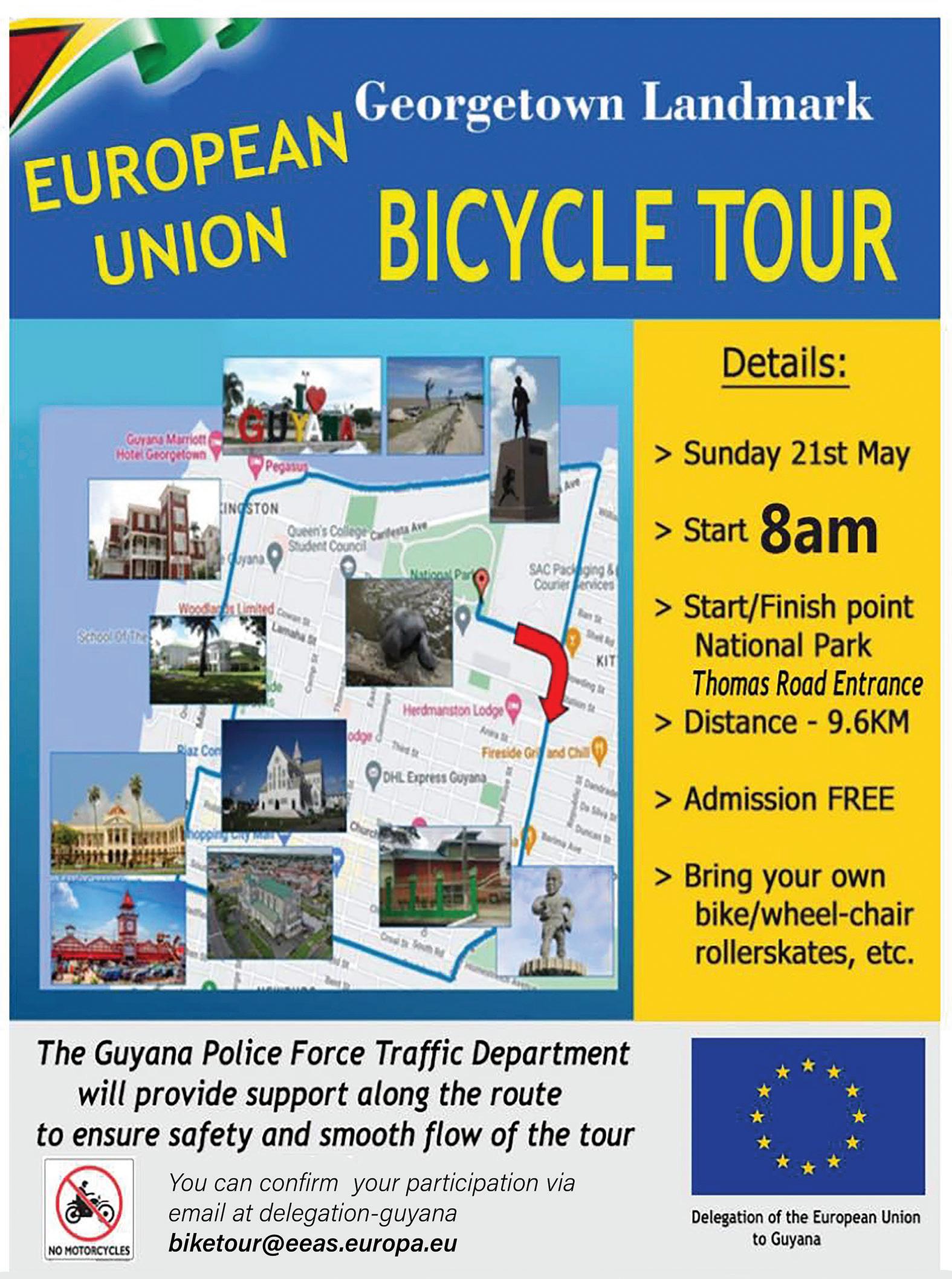

“Back to that dull place,” she lamented. But instead of the home, she was taken on a tour of the garden, stopping under a cherry blossom tree, the soft petals falling in her hair and in her lap
It gave her mind a brief moment of peace and after a long time, a little laughter of joy escaped her lips.

“Thank you,” she said quietly to the person standing behind her.
“It’s a kind of therapy,” a male voice said behind her, “You are in too much pain.”
He came around to stand in front of her, a handsome, young male nurse with a
body as she looked at him. It was quite puzzling, but before she could say anything, a female nurse came running across the gardens towards her, somewhat frantic.
“How did you get here?” she asked a bit breathlessly.
“The other nurse…” she began to say, but he wasn’t there. The nurse looked around perplexed, “There’s no one here.”
“Strange,” Sajani murmured,
That night while lying in bed, she thought of that afternoon, the tour around the garden, the cherry blossoms, and the male nurse with a kind smile. Something felt different, something that seemed to take away a little of her pain.
“I wonder,” she mused and closed her eyes, falling asleep. She wasn’t sure how long she slept, but when she opened her eyes, the male nurse was standing by her bedside. There was a kind of gentleness in his voice when he spoke to her.
“How are you doing?”
She pressed a button to raise her bed and said, “I had some sleep.”
“Good, you hadn’t been sleeping well.”
She looked at him, a little puzzled, “I can’t remember seeing you around here much.”
“I’m around…always,”
he said with that kind smile, “I know everything about everyone here.”
He came closer to the bed and said, “I know you’re looking forward to Mother’s Day when your sons will be visiting you.”
“Yes,” she smiled, a spark of light in her eyes, “Something wonderful to look forward to…” she paused and continued, the spark fading, “Then days would become dull again until another visit.”
He shook his head a little, understanding her pain, and said to her in a way of comfort, “It’s a different life and culture here for parents when old and needing care to be put in nursing homes.” She took a deep breath and then said quietly, “I made the ultimate sacrifices, giving heart and soul to my children. What did I do wrong?”
“You did nothing wrong, it’s just another phase of your life.”
She sighed, closing her eyes for a moment and when she reopened them, the nurse was just turning to leave but her words stopped him,
“Do you think I did something wrong in my past life?”
He looked at her for a long moment before answering, “I’m not sure.
Only you can know that.”
“I feel like something is missing from my past life that I can’t find.”
“Well, then maybe there’s a door to your mind you had closed a long time ago that you need to open to find the answers you want.”
On the eve of Mother’s Day, she asked the male nurse, “So, would you be going home to your mother?”
“No,” he answered. “Why?”
“She never wanted me.”
“Oh,” she exclaimed quietly, surprised by his blunt answer.
On Mother’s Day as she sat in the embrace of her sons and their families, the male nurse walked by on his way out, the pain evident on his face as he looked at her. That night’s sleep evaded her as she thought of him, “I wonder, what’s his story?”
To be continued…




the apprenticeship programme at the Guysuco Training Centre.
Sookpaul stated that once the candidates fill out the application form, they are then invited to write an entrance examination followed by an interview once they are successful at the examination.
He reported that every two years they seek to recruit 65 applicants where they would be required to live-in at the hostel and spend two years at the workshop for hands-on training in the field of air conditioning, refrigeration, electrical installation, motor vehicle service and repair, welding and fabrication, and heavy-duty equipment operator.

Sookpaul noted that the apprentice must spend two years at the workshop and another two years at his/her sponsor estate.
He disclosed an apprentice starts their day at 04:00hrs and will engage in training at the workshop from 07:00hrs to 11:00hrs, then from midday to 16:00hrs daily.
Sookpaul disclosed that since its establishment the Guysuco Training Centre has ‘churned out’ a total of 3430 skilled sugar workers.
The Guysuco Training Centre has the 1924 Rolls Royce which is in good condition and in working order, the apprentices also made from scratch a go-cart named Hot Rod and it is still in use, both on display and used for special occasions.
Of all the sugar estates in Berbice only Albion and Blairmont are still operational while Skeldon and Rose Hall are closed.
The Guysuco Training Centre has 29 staffers in total and it is a well-kept workshop outfitted with all machinery required to produce skilled workers with safety guidelines in mind.
Sookpaul told the Pepperpot Magazine that he is committed to serving his community and the sugar industry which the people depend on so heavily for their livelihood.
He related that his father was a sugar worker until he turned taxi driver of a Morris Oxford car and they too were locals of Free Yard, Port Mourant.

FROM PAGE II

ing care of children is optional; for me and the mothers I know, it’s really about consistency. Every day you’re getting up and caring for these little people that sometimes have no one else.”
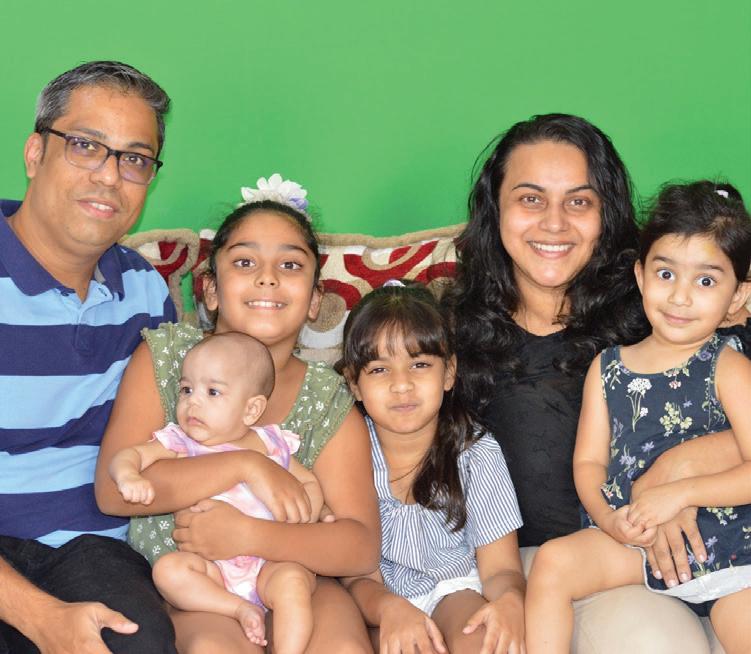

Evie said it helps, though, when she manages as a unit and not individually. This means that she assigns chores and gets the kids involved in what needs to be done.
Evie the businesswoman
Apart from being a successful mom to her four daughters, Evie is also quite a successful businesswoman. With a fascination for Perry Mason and Murder She Wrote, she wanted to become a lawyer while growing up. But her father, a business owner and a traditional man, wanted her to work with him and not pursue higher education. However, her love for reading, writing
and eventually being creative won, and she has enjoyed a very rewarding career in Marketing/Public Relations and Business Development.
Evie even copped the GCCI’s Woman in Business Award for 2022. “I felt very validated by my peers that I was doing something good. It was more than an award; it was a celebration of hard work. For me, it really boosted my morale that my work was recognised and appreciated. I was nominated a few times before, so winning it this time felt good; it made me want to do even more for the business community,” she expressed.
Evie receiving the GCCI’s Woman in Business Award for 2022


PARENTHOOD is a rewarding yet challenging role. Aside from being responsible for an entire human being’s wants and needs—you’re also faced with many personal conflicts and emotions about
your said role. I am sure some parents feel guilty on occasion if they deem some of their actions ineffective for child-rearing. That guilt is not selective to any specific gender or parent but for the purpose of this
article and the significance of the day—I’d like to enlighten you on the topic of “mom guilt”. The guilt by itself can be a separate difficulty that mothers experience on a daily basis. Guilt is a complex yet
normal emotion. However, too much guilt to feel can be overwhelming and unhealthy as well. It’s okay to feel guilt, but it’s not okay to allow it to consume you.
Mothers worry or experience “guilt trips” daily be-
cause they may feel as though they are not doing enough as a mother. It’s a feeling of inadequacy that can eventually lead to the feeling of guilt. The underlying causes of this may vary from individual to individual. From a person’s
beliefs on what the perfect parent may look like, their inability to provide certain wants or needs for their child and even when they make certain parenting mistakes
SEE PAGE XXV


FROM

when disciplining their child—just to name a few.

It is said that new moms are more susceptible to this feeling. In most cases, this guilt often stems from an unrealistic ideology of what the perfect mother looks like. You shouldn’t be upset at yourself because you’re experiencing “mom guilt”, instead, you can learn to introspect. I can assure you that you are not alone. I’m sure many, if not all, mothers have
experienced “mom guilt” at least once in their journey of motherhood. Like the rest of the world, Guyana has many traditional expectations of what and who a mother should be. With that in mind, many mothers may feel overwhelming pressure from society and even from their very own family members when they do not live up to certain societal expectations.
I’ve spoken to many “career-driven” women who are mothers, and it has greatly impacted them. The idea
of “leaving” your children in the care of a babysitter or daycare while you’re at work can guilt trip mothers. Mothers who can’t breastfeed their children in the ways they ought to can also feel an immense sense of guilt. They even blame their bodies for not providing in the way they want to for their children. Mothers who took out their frustration or anger on their children perhaps also felt guilt after they’ve reached a level of calmness. It’s okay, you’re human and
your emotions can sometimes be unwavering. Just be sure that you don’t make said outbursts a pattern of behaviour and you learn to apologise to your children when you’re in the wrong as well. Motherhood can be a complex, lonely and even conflictual journey and if you’re unable to cope effectively—don’t be afraid to reach out for help from trusted people, support groups or organisations in your community. You should be able to take a break whenever you
can—it’s okay to prioritise yourself and your self’s care. Establish a weekly routine of self-care activities so you won’t feel overwhelmed and overworked by all of your responsibilities. As difficult as motherhood sounds, it can be rewarding as well. You ought to remind yourself that “mom guilt” is complete -
ly normal but should not be allowed to cloud your judgement of the entirety of motherhood and the decisions you make for your child or children. It is my hope that this Mother’s Day marks the start of you feeling less guilty and more fulfilled about the sacrifices and decisions you make for your children. You have one of the world’s greatest yet challenging roles, and I hope you give yourself more credit for what you do.

FROM PAGE IV
stated, however, that art in Guyana is far from where it needs to be, saying,“We’re heading in the right direction, but there is lots more to be done.”
Fashion and design for Isaiah, he says, have evolved to be a part of his life. He wishes that people will see Moonlight Stories and fashion as more than something to admire, but see it as what it truly is, to some people: a passion, a business and a way of life. He said, “Moonlight Stories is so much more than a gala to come and dress up.” And Isaiah’s aim in his craft is simple, “As a designer, I hope the things I create uplift people and make them feel strong and powerful.”
Painter and designer.
One of the things that makes Moonlight Stories stand out is that it features different mediums of art, and last year Roberto Teekah’s paintings were showcased as part of the event. This year, however, Roberto’s work will be among the fashion pieces displayed. Owner of the Rio De Roberto brand, Roberto is a passionate young artist who believes that supporting art goes
far beyond simply looking and liking a piece of art.
Although having a background in painting, Roberto has always had a love for clothes. In 2016, he started his professional path in fashion, and on the 3rd of June, his first exhibition in Moonlight Stories will be held. “Fashion and art have always been a craving in me. I want to create something. I want to bring my ideas into reality,” Roberto said as he shared his love for his profession.
Events like these, Roberto believes, are not only an opportunity to create but also a reason to create something truly wild. He stated that “It gives designers a reason to create something really extravagant.” Going further, he expressed how much of an effect designing has on him, saying, “It is a form of expression and an innate desire to create something. There is real satisfaction in thinking of something and then being able to actually create it. It is a great show. You see a variety of designers who all do different things and all have a different point of view.”
With designers and artists as passionate as these, Moonlight Stories and the art scene in Guyans can have great expectations and development. With artists like Pekahiah and her captivating sculptures, Dexter’s out-of-the-box designs, Isaiah’s unique creations, and Roberto’s love for the creepy and grotesque; Moonlight Stories is bound to be immersive, interesting, and magical. Events like these and art everywhere in Guyana will become something all Guyanese should support and do so proudly.
The second iteration of Moonlight Stories will be hosted on June 3, 2023 at the Marriott Hotel.






























‘Tis education forms the common mind, Just as the twig is bent, the tree’s in- ALEXANDERclin’d.POPE (1688-1744) Epistles to several persons Ep.i. To Lord Cobham, 1.149
Dear Student,
Welcome dear friend. Speech writing is a skillful task. If you choose to write one under examination, then diligently organise its


May 14, 2023
body ideas according to instruction. Coin an interest-catching opening and an impressive closing with extraordinary care to complement the body. A poor beginning contributes to a lost audience which only an experienced speaker can retrieve. And the ideas expressed in closing will, in most cases, be the ones that your listeners will take away. Be very careful.
Love you.
Showing understanding by identifying the speaker
The Face in the Mirror (Robert Graves)
Grey haunted eyes, absentmindedly glaring
From wide, uneven orbits; one brow drooping
Somewhat over the eye
Because of a missile fragment still inhering,
Skin deep, as a foolish record of old-world fighting.
Crookedly broken nose – low tackling caused it; Cheeks, furrowed; coarse gray hair, flying frenetic;
Forehead, wrinkled and high;
Jowls, prominent; ears, large; jaws, pugilistic; Teeth, few; lips, full and ruddy; mouth, ascetic.
I pause with razor poised, scowling derision
At the mirrored man whose beard needs my attention,
And once more ask why
He still stands ready, with a boy’s presumption,
To court the queen in her high silk pavilion.
Something to Do
1. What is the meaning of each word used in the poem? inhering, frenetic, pugilistic, ascetic. You are free to use a dictionary here.
2. Who is the speaker in the poem?
3. Do you think this poem is a self-portrait? What evidence supports your thinking?
3. In the first two stanzas of the poem, Graves gives us a detailed description of his face. a) What do these details reveal about his past? b) Would you call this portrait realistic or idealistic? Explain your choice.
4. How does the poet state the feeling of ridicule about himself? Quote the two-word phrase where it is plainly found.
5. What two universal themes do you recognise that the poet deals with, in his poem? (A) love and aging (C) beauty and aging (D) dreams and celebrations (D) time and aging
6. Consider the last two lines of the poem. What evidence is there that the “inner man” is different from the image in the mirror?
Figuring out the structure of a descriptive passage
The small, wooden room was very untidy. The walls were messy, especially the one farthest from the door. Pencil, chalk, and spray paint marks disfigure it all over. A dust-covered portrait of a young man in colourful clothing, which hosted spiders’ webs, was pinned to the wall. A yellow, musty foam mattress lay on the floor, with its edges pinched off in parts, in the centre of the room. At the side of this bed there were peanut shells, sweet biscuit and candy wrappers, all grey with ash, and a small tray that was overrun with ashes and cigarette butts. Near to the doorway there was a pair of navy-blue canvas shoes and a pair of trousers which had become black from heavy-duty engine grease and dirt. The small, wooden room was in a mess and had not been cleaned since Compton left its occupancy seven years ago.
1. Quote the topic sentence in the above paragraph.
2. What part of the room was described first?
3. What part of the room was described next?
4. What part of the room was described last?
5. In what order did the writer put the details in the paragraph?
(A) bottom to top (B) left to right (C) far to near (D) near to far
6. In which sentence did the writer restate the main idea?
7. Write a descriptive composition with vivid details of a stranger in weird, foul-smelling clothing who stepped into your place of worship one day.
Instructions: Each sentence in this section is followed by four options. Choose the option nearest in meaning to the original sentence.
1. Cigarettes have been linked to lung cancer and, strange enough, so has bacon.
(A) It is rather peculiar that bacon, like cigarettes, is connected with lung cancer.
(B) Cancer of the lungs links cigarettes, and strangely enough, bacon.
(C) It is strange that bacon, quite unlike cigarettes, is linked to lung cancer.
(D) It is no wonder at all that both cigarettes and bacon are linked to lung cancer.
2. According to the witness, she did not see the accused man near the scene of the crime.
(A) The witness testified that the accused man was far from the location where the crime was committed.
(B) The witness testified to seeing no evidence that the accused man had committed the crime.
(C) The witness testified that the accused man was not seen by her near the place where the crime was committed.
(D) The witness testified that she did not see the accused man commit the crime.
3. Her clothing is statement-making and provocative.
(A) Her clothing is most exciting.
(B) Her clothing tends to make the onlooker excited.
(C) Her clothing is appealing and stunning.
(D) Her clothing is concerned with making headlines.


UP to eight grams (one-third of an ounce) of sugar is added to every 2 teaspoons of liquid forms of medication to preserve the product and conceal an unpleasant taste. If taken at least three times a day, the last intake often at bedtime and perhaps kept in the mouth for a minute or two before being swallowed, the effect on the teeth will rapidly be catastrophic in the form of dental decay.
convulsions) usually take hydantoin sodium. This drug causes the gums to swell, which may ultimately cover most of the crowns of the teeth.
It is advisable that before dental treatment, these persons should have pre-medication with sedatives such as diazepam or oxazepam. Chlorhexidine is a widely used, very effective disinfectant in the mouth. The
recommended concentration routine use is 0.2 percent. It is well known that Chlorhexidine can cause discolouration of the teeth and tongue while inducing taste disturbances. Consequently, as an important participant in the treatment process, the danger of potential drugs must never be underestimated.
Therefore, without quite realising it cough syrup, etc. can cause dental caries in persons who do not adhere to the rules of oral health.
Everyone is affected by the stress of modern life and in the quest for respite, ironically, uncontrolled self-meditation in all forms is practised, sometimes leading to serious situations. Occasionally, dental personnel unnecessarily prescribe medications for their patients, which constitutes drug abuse. While all drugs produce undesirable side effects cognisance must also be given to the various conditions derived from the use of certain drugs.
Aspirin is probably the most frequently used drug. Indeed, it is widely possible to prevent chronic heart disease if taken consistently and promoted as the best medicine for arthritis. However, a daily intake of 2 to 3 aspirins results in 5 millilitres (one teaspoon) of blood being lost in the faeces every 24 hours due to the erosion effect on the protective mucosal barrier of the stomach.
If this continues for some time without dietary supplementation of iron, the person may eventually develop iron deficiency anemia, the symptoms of which can include a smooth tongue surface, tenderness in the oral cavity, pain when swallowing, tiredness and shortness of breath. Hookworm infestation may present identical symptoms. Because the oral symptoms predominate, it is likely that the dentist will be the first to diagnose the problem, especially in postmenopausal women.
Every patient currently on systemic corticosteroid medication should be covered with an extra dose of steroids when he visits the dentist. If this is not done, the stressful experience could trigger an adrenal insufficiency syndrome with a sudden fall in blood pressure, leading to severe shock and even death.
It is estimated that the risk of an allergic reaction in asthmatic patients is 5 to 10 times higher than in normal patients. They are especially prone to react allergically if treated with penicillin or aspirin. Aplastic anemia is a serious and sometimes fatal complication of the use of drugs that can depress the bone marrow, resulting in an arrest of the production of red and white blood cells and platelets. One of the first symptoms of this condition is spontaneous bleeding of the gums with oral sores in a very pale patient.
Among the drugs known to induce bone marrow depression are chloramphenicol and phenylbutazone, commonly known used to treat typhoid and arthritis, respectively. Patients suffering from grand mal epilepsy (the type with

